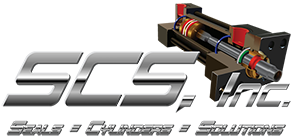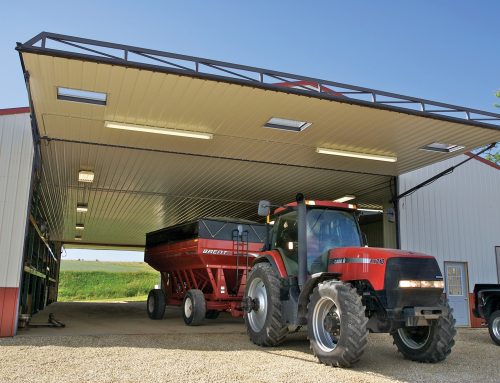A new blog post: Hydraulic Cylinder Tips – Part 1
The first of a seven part series by Andrew Delaney offering useful tips for hydraulic engineers and hydraulics maintenance professionals.
Check the glands and seals! If a hydraulic cylinder develops a leak, it is most likely to be from the gland. Premature seal failure may be caused by the presence of abrasive particles – either from the external environment or carried in contaminated hydraulic fluids.
Seals can also fail due to excessive temperatures or unsuitable seal materials for the application, or through premature wear caused by excessive side loading. When specifying or overhauling a cylinder, check that the specification of the seal is suited to the fluid medium and application.
By incorporating separate, detachable gland assemblies in their designs, cylinder manufacturers can help facilitate ease of maintenance; often without the need to remove the cylinder from the machine. As well as minimising downtime, detachable glands simplify handling and reduce the stock holding of spare parts.
Hydraulic cylinder tips part 2
Second in a seven part series of useful tips for hydraulic engineers and maintenance professionals
Pay attention to mountings Careful attention at the design stage to considerations such as cylinder mounting will have a bearing on the ultimate cost of ownership. Cylinder mountings transmit the force applied by the cylinder to the surface on which it is mounted.
They are responsible for controlling alignment and resisting movement, which would result in eventual fatigue failure. The most efficient transmission of force occurs along the cylinder’s centre line, as with flange-mounted cylinders. Trunnion mounted cylinders also absorb force on their centreline, but lack the rigidity of a fixed mounting. Foot-mounted cylinders do not absorb force on their centrelines and should be firmly secured, using a thrust key for positive location where necessary.
In ‘pull’ applications, where the piston rod is in tension, mounting the cylinder from the head end reduces the forces applied to the cylinder body. In ‘push’ applications, with the piston rod in compression, a cap end mounting is generally preferred.
Hydraulic cylinder tips part 3
Is your cylinder cushioning progressive? The load attached to an unregulated cylinder stops abruptly when it meets a physical obstacle or when the piston in the cylinder reaches the end of its travel. The resulting shock is transmitted to the machine and/or cylinder, often with considerable force and noise.
In some simple applications, this is acceptable; however, in others, such as in assembly automation, more controlled acceleration and deceleration is required if shortened service life and compromised productivity are to be avoided.
By utilising the rising back pressure in the cylinder as it approaches the end of its stroke, system fluid can be used to create a progressive retarding effect as flow is reduced using a tapered ‘cushion’ valve.
Parker’s industrial hydraulic cylinders feature adjustable cushioning which allows the operator to compensate for variations in load, temperature and viscosity. Critically, where several cylinders are working together, adjustable cushioning allows fine tuning to ensure that cushion performance is correctly balanced.
Hydraulics cylinder tips part 4
12 February 2013
Seal replacement In the face of continually increasing pressure to keep manufacturing costs low in the face of both stiff competition and challenging economic times, equipment operators may choose to replace individual components rather than the complete cylinder.
While kits of replacement gland seals are available, best practice would recommend the installation of complete glands with the seals pre-fitted. This approach helps minimise downtime, restores alignment where wear has occurred and significantly reduces the risk of damaging a seal while fitting; a particular issue in the case of more difficult to handle and delicate small diameter seals.
When seals are replaced, take a few minutes to examine the old seal and gland. If, for example, slight misalignment between the cylinder and machine member has caused the seals to fail prematurely, time spent correcting the alignment will pay dividends in terms of extended life and reduced maintenance.
Hydraulic cylinder tips part 5
Cylinder body and end caps The cylinder body and end caps together contain the full hydraulic pressure created by both the hydraulic system and the load under dynamic conditions.
They are designed to withstand peak pressures, which can exceed twice the maximum rated operating system pressure. When selecting a cylinder, then, consider not only the system pressure but also the ‘spikes’ that can occur when resistance to travel is encountered.
As an example, Parker’s tie rod cylinders are designed to be fatigue-free at the maximum rated pressure, and have a 4:1 factor of safety; this is designed to ensure the safety of personnel as well as the long working life of the cylinder. The use of high grade tube and tie rod materials plus the machining of end caps from solid billets results in strong dependable cylinders that deliver high productivity over a long service life.
Hydraulic cylinder tips part 6: check cylinder alignment
A hydraulic cylinder piston rod has a dual function: it transmits the force generated by the fluid acting against the piston, and it guides the direction in which that force is applied.
This second function leads to one of the most common causes of early seal failure: if the piston rod and the machine member to which it is attached are not precisely aligned, side loading of the piston rod will cause rapid wear to one side of the gland and seal assembly. The efficiency of the cylinder is reduced and the condition may also result in contamination of the hydraulic fluid, leakage and, potentially, rod breakage.
Specifying cylinders that use high quality materials and finishes can offset higher initial costs by giving a reduced total cost of ownership. High tensile, carbon alloy steel piston rods that have been subjected to hardening, plating and polishing processes will not only maintain sustained high levels of performance, but also increase seal life and reduce overall maintenance requirements.
Hydraulic cylinder tips part 7: choose the correct piston seals
24 April 2013
A hydraulic cylinder is at its most efficient when 100 percent of the available hydraulic pressure is applied to the surface of the piston.
Any leakage of pressurised fluid past the piston seals will result in a rapid drop in performance. Leakage past the piston seals also means that the cylinder will not support a suspended load, which may be a safety critical requirement in applications such as presses.
Manufacturers such as Parker offer a range of piston seal types to suit different application criteria. If considerations such as, for example, load holding, servo performance or aggressive environments will be an issue, ensure that the piston seals chosen are appropriate for the job.
Time spent selecting suitable piston seals at the outset will be repaid many times over in terms of machine performance and service life.



